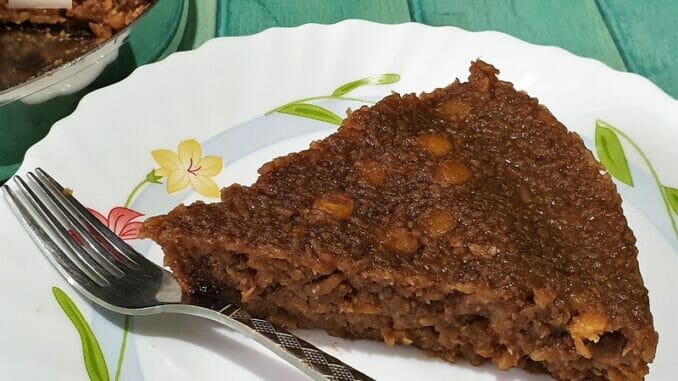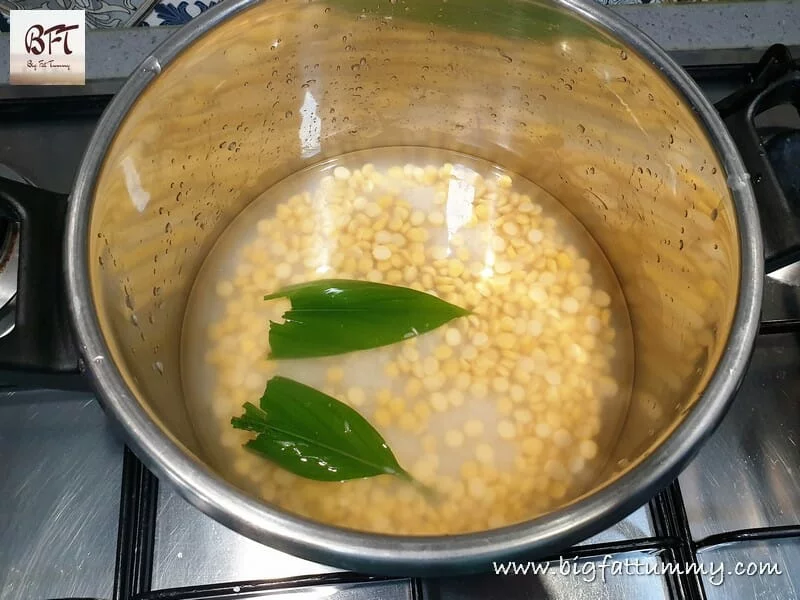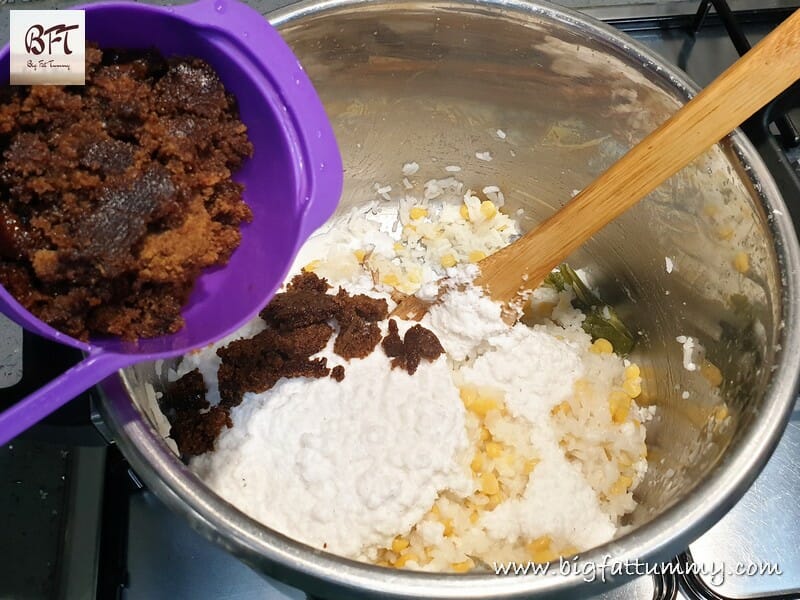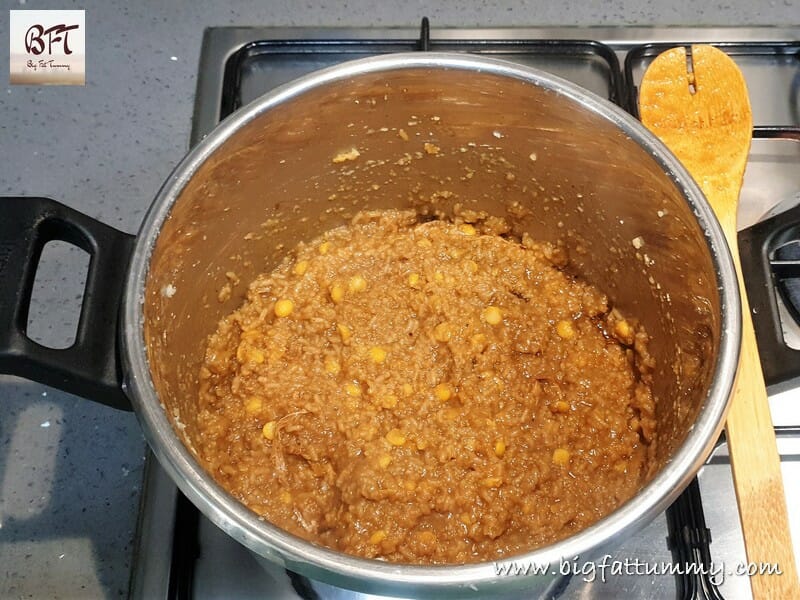
Atol is a Goan sweet which was prepared in huge quantities at homes in yesteryears. It was prepared in celebration of a good harvest by the landlord (bhatkar) somewhere around October and served to all villagers. Traditionally, it was made and set on plantain leaves. It is also one of the sweet dishes prepared on the 1st of August as it is a belief to prepare something sweet on this day. People also prepared and set small portions of it, called boshies and gave it to elderly couples and asked them to pray for the deceased ancestors of one’s family. Otherwise, people also prepare it as a tea time snack.
Serves: 4 to 6 Persons
Prep. Time: 15 Mins. + Soaking
Cooking Time: 30 Mins.
Ingredients:
[ Standard Measure : 1 cup = 250 ml ]
- Chana Dal – ½ cup
- Raw Rice [pref. sona masuri] – ½ cup
- Coconut (grated) – 1 cup
- Sugarcane Jaggery (grated) – 1 cup
- Turmeric Leaves – 1 to 2
- Cardamom Powder – ¼
- Ghee – 1 tsp.
- Salt – ¼ tsp.
Step 1: Wash and soak the chana dal for an hour.
Step 2: Wash and drain the rice and add to a pressure cooker. Drain the dal and add to the same pressure cooker along with the turmeric leaves, salt and 2 cups of water. Place on heat and pressure cook for two whistles on high heat. Then switch off the heat and let the pressure release naturally.
Step 3: Grind the coconut in a grinder with a little water till fine.
Step 4: Later, open the pressure cooker and add the coconut and grated jaggery and turn on the heat. Cook on low heat whilst stirring continuously until the mixture starts leaving the side of the cooker (see pics below). Add the cardamom powder, mix and cook for another 2 minutes.
Step 5: Transfer to a greased thali / mould. Apply the 1 tsp. of ghee on the top and allow to cool. Later you can cut into slices and serve with a cup of tea.
Notes:
- Traditionally, Atol was prepared with the local Goan rice. But it difficult to procure when out of Goa and also takes longer to cook.
- If you do not have turmeric leaves, you can skip them and use an additional ¼ tsp. of Cardamom Powder.
- I have used organic sugarcane jaggery and hence the dark colour.
- You can also use a combination of sugarcane jaggery and palm jaggery. 1:3 or 1:1 (see pic)









Leave a Reply